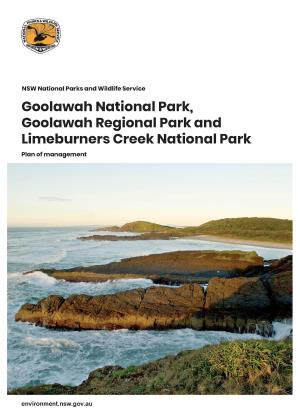 This plan replaces the previous plan of management for Limeburners Creek National Park, which was adopted in 1998. It also replaces the statement of management intent for Goolawah National Park and Goolawah Regional Park, which was approved in 2014.
This plan replaces the previous plan of management for Limeburners Creek National Park, which was adopted in 1998. It also replaces the statement of management intent for Goolawah National Park and Goolawah Regional Park, which was approved in 2014.
This plan describes how the parks will be managed to achieve the objects of the National Parks and Wildlife Act 1974, consistent with the management principles under the Act for national parks and regional parks.











